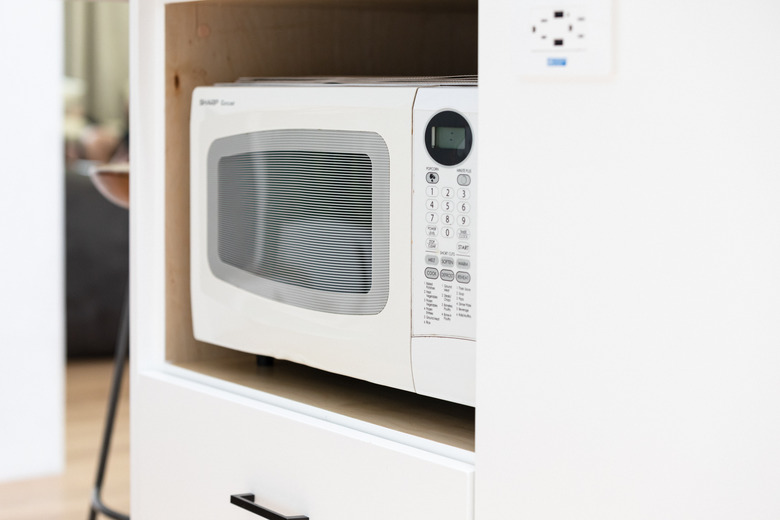8 Mistakes To Avoid When Using Your Microwave
Microwaves are a many-splendored appliance. Not only do they allow you to quickly heat up all kinds of meals, but you can also use them to steam and defrost certain foods, too.
However, no matter how versatile microwaves may be, there are some things you just shouldn't do with yours. From nuking paper products to not covering your food correctly, here are eight mistakes you might be making with your microwave — and what to instead.
1. You’re using the wrong power setting.
1. You're using
the wrong power setting.
If you're not setting a specific power setting before heating up food in the microwave, you're doing it wrong. While the highest power setting works well for heating up leftovers, not all foods, particularly denser ones like meats and cheese, cook properly at high temperatures. Before you hit the one-minute button on your microwave, double check the instructions on your food packaging (or with the USDA) to make sure you're choosing the correct power setting.
2. You’re nuking the wrong kinds of food.
2. You're nuking the wrong kinds of food.
Not all foods are microwavable. Certain items such as shelled or hardboiled eggs, red pasta sauce, and processed meats (hotdogs) can actually explode inside a microwave, leaving you with a big mess to clean (and no snack to savor). Other foods, including leafy greens like kale, can quite literally spark when heated in a microwave — destroying both your beloved appliance and dinner.
3. You’re heating up paper cups.
3. You're heating up paper cups.
Although paper cups are designed to hold hot liquids like coffee inside of them, they aren't suited to handle the heat of a microwave. High microwave temperatures can actually melt the glue the holds your paper cups together, causing leaks, scorches, or worse, a fire, so stick with a microwave-safe mug or glass when heating up liquids.
4. You’re microwaving plastic.
4. You're
microwaving plastic.
Forget that most food storage containers are composed of plastic — heating them in the microwave is no-go. According to the FDA, some plastic containers should not be used in a microwave oven because they can be melted by the heat of the food inside. Other studies suggest that putting plastic in the microwave can cause harmful chemicals including phthalates and Bisphenol A (BPA) to leach, so your safest bet is to only heat food inside ceramic, glass, and other microwave-safe containers.
5. You’re not covering your food.
5. You're not
covering your food.
If you aren't covering your food in the microwave, you're not heating it correctly. Along with preventing spills and messes, a microwave-safe cover helps ensure your food gets cooked thoroughly and evenly, so do yourself (and your dinner) a favor and invest in a splatter guard or lid, like this glass style at The Grommet.
6. You’re not stirring your food midway.
6. You're not
stirring your food midway.
Your microwave is designed to heat the surface of your food quickly, which is why the outside of our food is often hotter than the center. Take care to stir, mix, or flip your food over at least once midway through the microwave cycle to heat your food evenly and thoroughly.
7. You’re microwaving packaging that you shouldn’t.
7. You're microwaving
packaging that you shouldn't.
Make no mistake about it: Styrofoam and plastic wraps are not okay in the microwave. When heated in the microwave, foam carryout containers, ready-made ramen cups, and plastic storage bags can melt and leak toxic chemicals, so always check that the packaging is microwave-safe before heating.
8. You’re not cleaning your microwave regularly.
8. You're not
cleaning your microwave regularly.
A little vinegar goes a long way when cleaning your microwave. Mix ½ cup of white vinegar with ½ cup of water in a glass measuring cup and microwave it on high power for two minutes. Let it sit for 10-15 more minutes to allow the steam to loosen up all the caked-on food and grime and voila: You can wipe down your microwave with ease. Do this once a week for a simple and eco-savvy way to keep your microwave clean.
